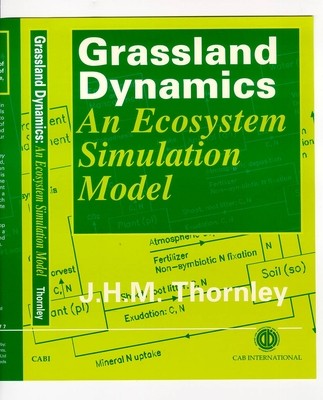
- We will send in 10–14 business days.
- Publisher: CABI
- ISBN-10: 0851992277
- ISBN-13: 9780851992273
- Format: 18.5 x 25.7 x 2 cm, hardcover
- Language: English
- SAVE -10% with code: EXTRA
Grassland Dynamics (e-book) (used book) | bookbook.eu
Reviews
Description
Flexible and fast, computer simulations now play an important role in the study of ecology. This book gives a complete account of one such simulation, the Hurley Pasture Model, a dynamic, deterministic, mechanistic model for grassland, developed by the author and his colleagues over the last
twenty years. The book presents the rationale and theoretical elements of this type of model, followed by an overview of the Hurley grassland simulator and the derivation and construction of its plant, animal, soil and litter, water, and environment and management components. The model is then
evaluated by a series of long- and short-term dynamic simulations and steady state responses, which demonstrate how predictions can be made about the effects of, for example, climate change or particular regimes of fertilizer application, grazing or cutting. This book will be of great value to
grassland agronomists and modelers, crop physiologists and plant ecologists, and to students of ecology as a case study of a plant ecosystem model. It will also be of interest to other ecologists and environmental scientists pursuing computer modeling and its applications.
EXTRA 10 % discount with code: EXTRA
The promotion ends in 20d.22:22:25
The discount code is valid when purchasing from 10 €. Discounts do not stack.
- Publisher: CABI
- ISBN-10: 0851992277
- ISBN-13: 9780851992273
- Format: 18.5 x 25.7 x 2 cm, hardcover
- Language: English English
Flexible and fast, computer simulations now play an important role in the study of ecology. This book gives a complete account of one such simulation, the Hurley Pasture Model, a dynamic, deterministic, mechanistic model for grassland, developed by the author and his colleagues over the last
twenty years. The book presents the rationale and theoretical elements of this type of model, followed by an overview of the Hurley grassland simulator and the derivation and construction of its plant, animal, soil and litter, water, and environment and management components. The model is then
evaluated by a series of long- and short-term dynamic simulations and steady state responses, which demonstrate how predictions can be made about the effects of, for example, climate change or particular regimes of fertilizer application, grazing or cutting. This book will be of great value to
grassland agronomists and modelers, crop physiologists and plant ecologists, and to students of ecology as a case study of a plant ecosystem model. It will also be of interest to other ecologists and environmental scientists pursuing computer modeling and its applications.


Reviews